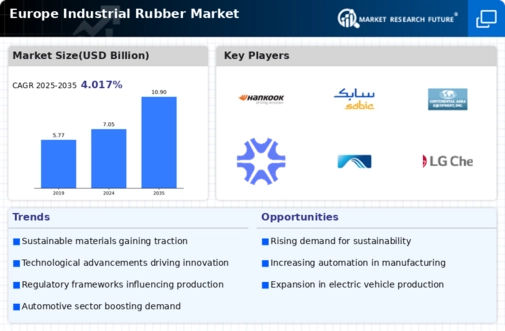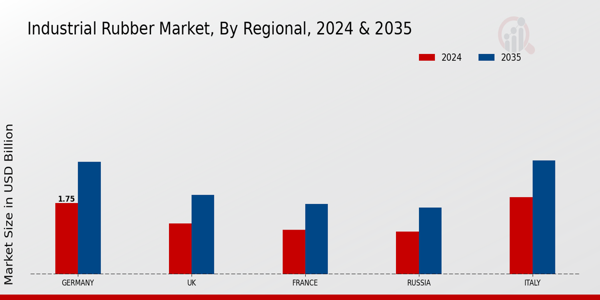The is characterized by a diverse and competitive landscape, encompassing a range of players that contribute to the sector's dynamics. The market is influenced by factors such as increasing demand for industrial applications, technological advancements, and the growing emphasis on sustainability and eco-friendly materials. Key competitors within this sector are continuously striving to enhance their product offerings and capture greater market share through innovation, strategic partnerships, and expanding their production capacities.
The competitive insights emerge from evaluating the strengths, strategies, and market positioning of different players, which are crucial for understanding the overall market trends and opportunities in this region.Hankook Tire has established a strong foothold in the , driven by its innovative approach and commitment to quality. The company's reputation for producing high-performance tires and rubber products appeals to a wide range of industrial applications, allowing it to cater to various segments within the market. With a focus on advanced technology, Hankook Tire has developed products that meet the demanding performance standards of European customers.
The company's strengths lie in its research and development capabilities, enabling it to introduce cutting-edge products that align with the evolving needs of the industry. Furthermore, Hankook Tire benefits from a robust distribution network and a growing brand presence, which enhances its competitiveness in the ever-evolving market landscape.Pirelli and C. S.p.A. holds a prominent position in the , exemplifying excellence in tire manufacturing and rubber solutions. Known for its premium products, Pirelli focuses on high-performance tires designed for both consumer and industrial applications, showcasing advanced technologies tailored to enhance vehicle safety and performance.
The company has a solid market presence across Europe, bolstered by strategic partnerships and collaborations that extend its reach. Pirelli's strengths stem from its longstanding tradition of innovation and quality, allowing it to maintain a competitive edge. The firm has also engaged in strategic mergers and acquisitions to bolster its portfolio and expand its operational capabilities within the European market, ensuring it remains a key player in the industry. This proactive approach enables Pirelli to respond effectively to market trends while maintaining a commitment to sustainability and operational efficiency in its product offerings.



















